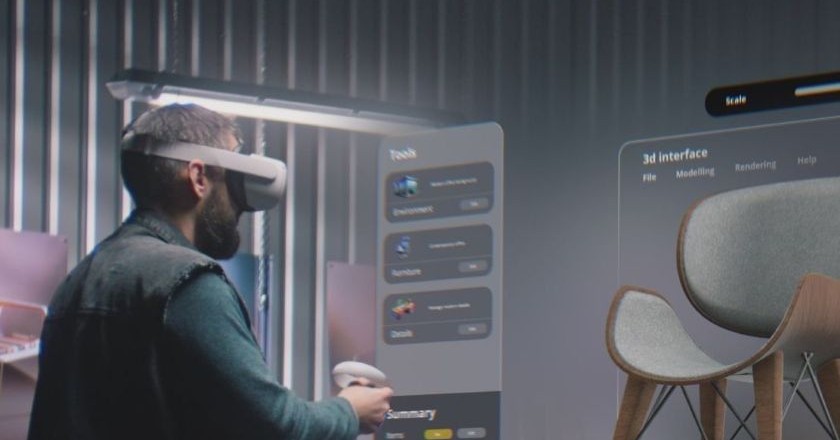What if you could predict exactly what your customers want before they even walk through the door? Sounds too good to be true? In furniture retail, it’s already happening, and AI is making it possible.
In an industry where margins are tight and customer loyalty is key, staying ahead of trends and anticipating customer needs is essential. Whether you’re optimizing stock levels or creating tailored shopping experiences, the right AI for home and furniture retail solutions can help you drive sales, improve operational efficiency, and boost profitability.
Why Legacy Systems Are Holding Furniture Retailers Back
While legacy systems may have worked in the past, they now introduce more obstacles than solutions. Let’s look at why they’re holding retailers back.
How AI Solutions Are Replacing Inefficient Legacy Systems
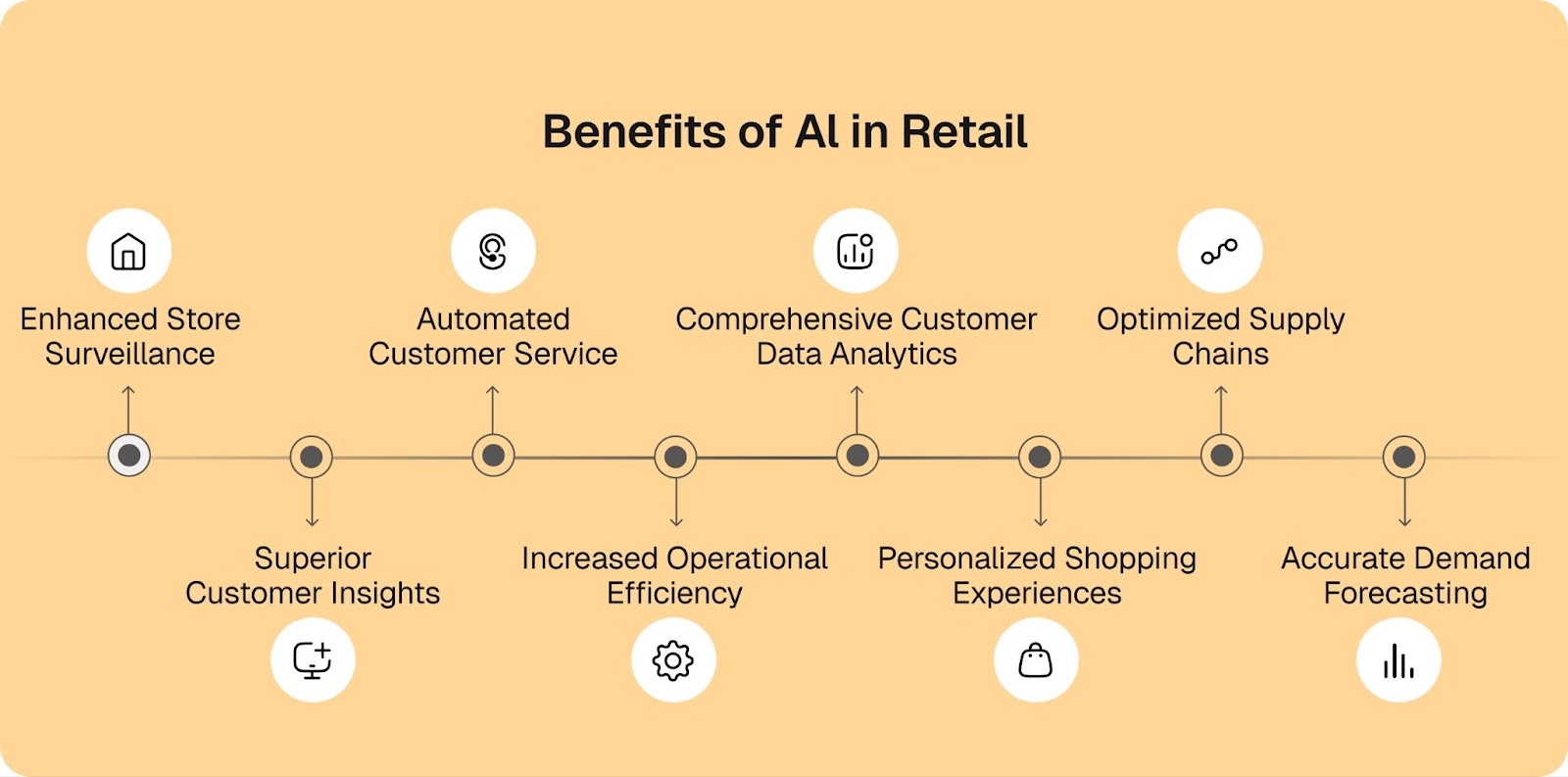
Legacy systems often rely on manual processes and outdated data management, which can lead to slow decision-making and errors. AI in retail software is replacing these outdated systems by automating tasks and providing real-time data that helps retailers make faster, more accurate decisions. Here’s how:
- Real-time data and analytics: Unlike legacy systems that rely on static data, AI processes real-time information, giving retailers immediate visibility into inventory, sales, and customer trends. This allows for quick adjustments and helps avoid costly mistakes like overstocking or stockouts.
- Inventory management automation: Manual inventory tracking is prone to errors. AI-powered systems automate inventory management, ensuring accurate stock levels and predicting demand to avoid overstocking or running out of popular products.
- Improved customer experience: AI personalizes the shopping experience by analyzing customer data and making real-time recommendations, which helps customers find products more quickly and boosts sales.
- Supply chain optimization: AI furniture retail software enhances supply chain efficiency by providing insights into shipments, delivery routes, and delays, reducing costs and ensuring timely deliveries that improve customer satisfaction.
- Easy integration with new tech: Unlike legacy systems, AI can easily integrate with modern retail tools like POS, e-commerce platforms, and CRM software, streamlining operations and improving overall efficiency.
The True Price of Maintaining Outdated Technology in Furniture Retail
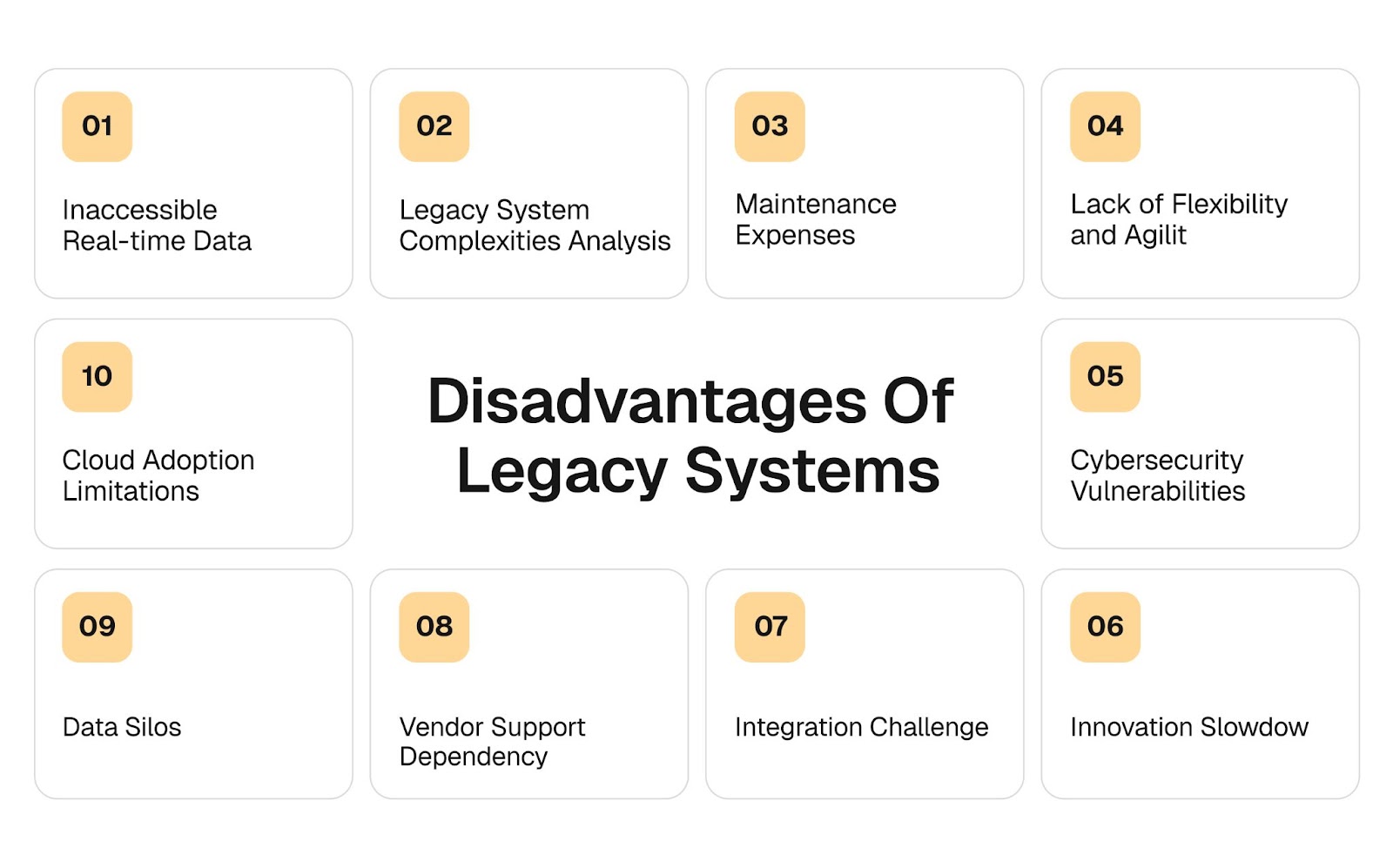
Sticking with outdated technology might seem like a cost-saving move, but the reality is that it’s costing you more than you think.
- Missed Sales Opportunities
Outdated systems can lead to slow processes and missed sales, as inventory may not update in real-time, causing you to sell out-of-stock items or fail to meet customer demand. This not only frustrates customers but also sends them straight to competitors who can offer a smoother, more reliable experience. - Increased Labor Costs
Maintaining outdated systems requires more manual work, such as troubleshooting, data entry, and fixing errors. This increases labor costs and takes time away from higher-value tasks like assisting customers or boosting sales.
- Data Inaccuracies
Legacy systems often rely on outdated or inaccurate data, leading to mistakes in stock levels, pricing, and availability. These mistakes can result in overstocking, stockouts, and missed revenue—all of which directly impact your bottom line.
- Inability to Scale with Business Growth
As your business grows, so do the demands on your system. Legacy systems are often unable to scale with your expanding inventory or growing number of locations. This results in bottlenecks, delays, and missed opportunities for growth. - Poor Customer Experience
Finally, an outdated system can severely hurt your customer experience. Slow processes, inaccurate stock updates, and frustrating delays can quickly push customers away. In a retail environment, consumers expect real-time, seamless service, and anything less can send them to competitors.
Leveraging AI to Drive Higher Sales and Revenue in Furniture Retail
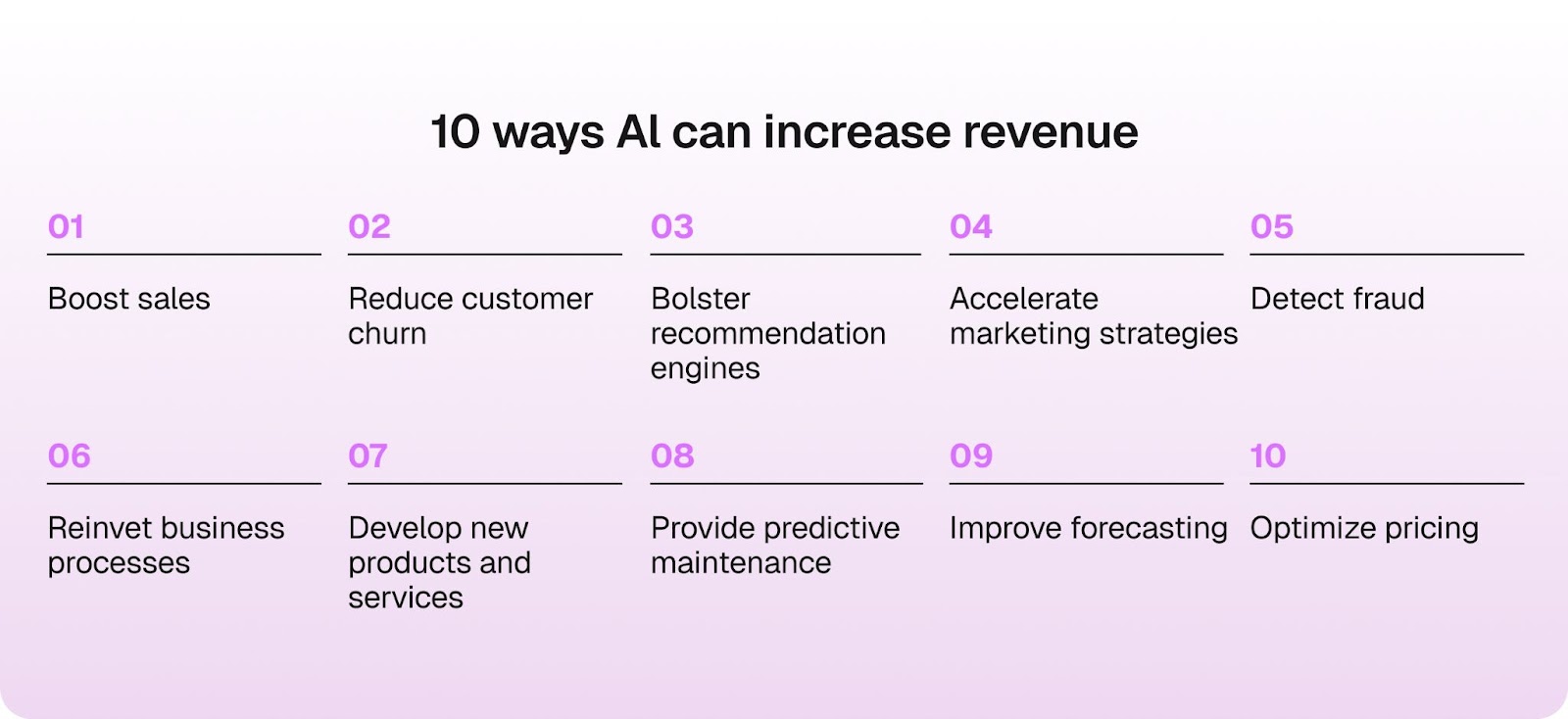
If you’re looking to grow your revenue, AI is the tool that can make it happen. Let’s explore how it can help drive higher sales in your furniture store.
The Secret to Increasing Sales: AI-Driven Personalization
One of the most powerful ways to increase sales in furniture retail is by offering a personalized shopping experience. The more tailored the experience, the more likely customers are to make a purchase. This is where AI furniture retail software tools like Evoneer’s AI Store Assistant come in.
Evoneer’s AI Assistant enables sales associates to deliver instant, personalized customer service from the moment a customer walks in. By providing immediate access to real-time product information, the assistant ensures staff can offer relevant, tailored recommendations—without having to leave the sales floor.
The AI assistant consolidates product data, availability, pricing, and delivery schedules into one easy-to-access platform. This means associates can quickly answer customer queries with accurate, up-to-date information, offering a seamless shopping experience. Whether a customer is looking for a specific sofa or needs help finding a matching coffee table, Evoneer’s AI ensures associates are always equipped to provide the best recommendations based on current inventory.
Speeding Up Customer Service with AI-Powered Solutions
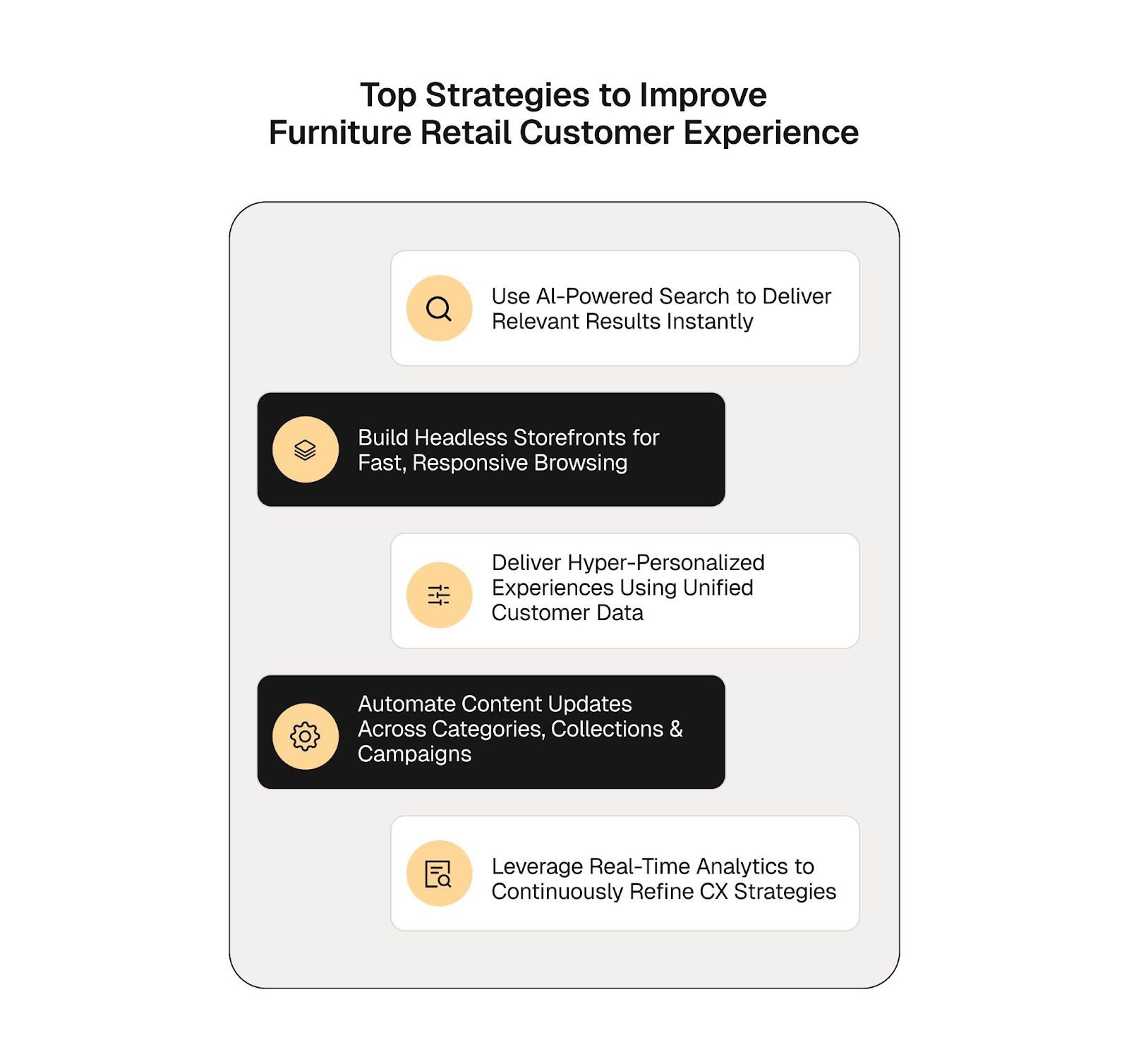
Customer service in furniture retail can be slow when staff are tied up searching for product details or checking stock levels. Evoneer’s AI Store Assistant speeds up this process by giving sales associates immediate access to real-time information.
Rather than waiting for stock updates or trying to recall delivery schedules, staff can instantly pull up product availability, pricing, and delivery options, all in one place. This means they can respond to customers faster, offering accurate answers without delay.
With routine queries handled by the AI assistant, sales associates have more time to engage with customers and provide a more meaningful, personalized experience. This results in quicker responses, smoother service, and ultimately, happier customers who are more likely to make a purchase.
Streamlining Operations with AI for Increased Profitability
If your operations are holding you back, AI can help. Here’s how it simplifies tasks, reduces errors, and increases profitability by freeing up your resources.
How AI Can Help You Reduce Waste and Optimize Inventory Levels
Effective inventory management in furniture retail is a balancing act—too much stock ties up resources, while too little leads to missed opportunities. AI-driven systems tackle this by analyzing detailed sales patterns, tracking customer preferences, and monitoring external factors like seasonal trends or regional demand shifts. This enables retailers to predict the exact demand for each item, helping them maintain the right stock levels and avoid overstocking or stockouts.
Here’s how it works in practice:
A mid-sized furniture retailer adopted an AI-driven demand planning system to better understand its stock requirements. By analyzing a combination of past sales, customer behavior, and external factors such as holidays or events, the system was able to forecast demand with 15% more accuracy than traditional methods. This optimization resulted in a $16 million annual savings across 120 stores by cutting down on excess inventory and reducing the number of stockouts. With smarter forecasting, the retailer could stock the right products at the right time, reducing waste and missed sales while improving cash flow.
Automating Supply Chain Management for Greater Efficiency
Managing the supply chain in furniture retail is complex—handling orders, coordinating deliveries, and managing supplier relationships can be time-consuming and prone to errors. AI simplifies this by automating key processes, from order processing to delivery scheduling. With AI-driven insights, retailers can streamline their entire supply chain, reducing delays and improving cost efficiency.
For example, AI can optimize delivery routes to minimize fuel costs and delivery times, while also predicting demand more accurately. This allows retailers to manage inventory levels more effectively, ensuring that they meet customer demand without overstocking.
To put it into perspective:
A leading Dutch furniture retailer partnered with HCLTech to digitize its supply chain using Blue Yonder’s AI solutions. By integrating AI-driven demand sensing and fulfillment systems, the retailer improved forecast accuracy, which reduced excess stock and ensured timely deliveries. The automation of these processes also led to significant cost reductions, boosting overall efficiency and helping the retailer stay competitive.
Streamlining Operations and Reducing Costs with AI Automation
AI automation simplifies day-to-day operations by handling tasks like inventory tracking, order processing, and customer service. This reduces the need for manual intervention, minimizes human error, and speeds up processes. As a result, staff can focus on more valuable tasks, such as enhancing customer relationships or improving sales strategies.
For customer service, AI-powered tools like chatbots can handle repetitive inquiries, freeing up customer service teams to address more complex issues. This helps retailers reduce costs by minimizing the need for large customer service teams while improving response times and customer satisfaction.
A real-life example of this is:
City Furniture implemented RFID technology and AI-driven automation to manage inventory across its showrooms. By tagging products with RFID chips and integrating AI systems, they could track inventory in real time and automate cycle counting. This led to greater accuracy, reduced stock discrepancies, and improved operational efficiency, cutting down on the time spent manually checking stock levels.
How AI Will Shape the Future of Furniture Retail
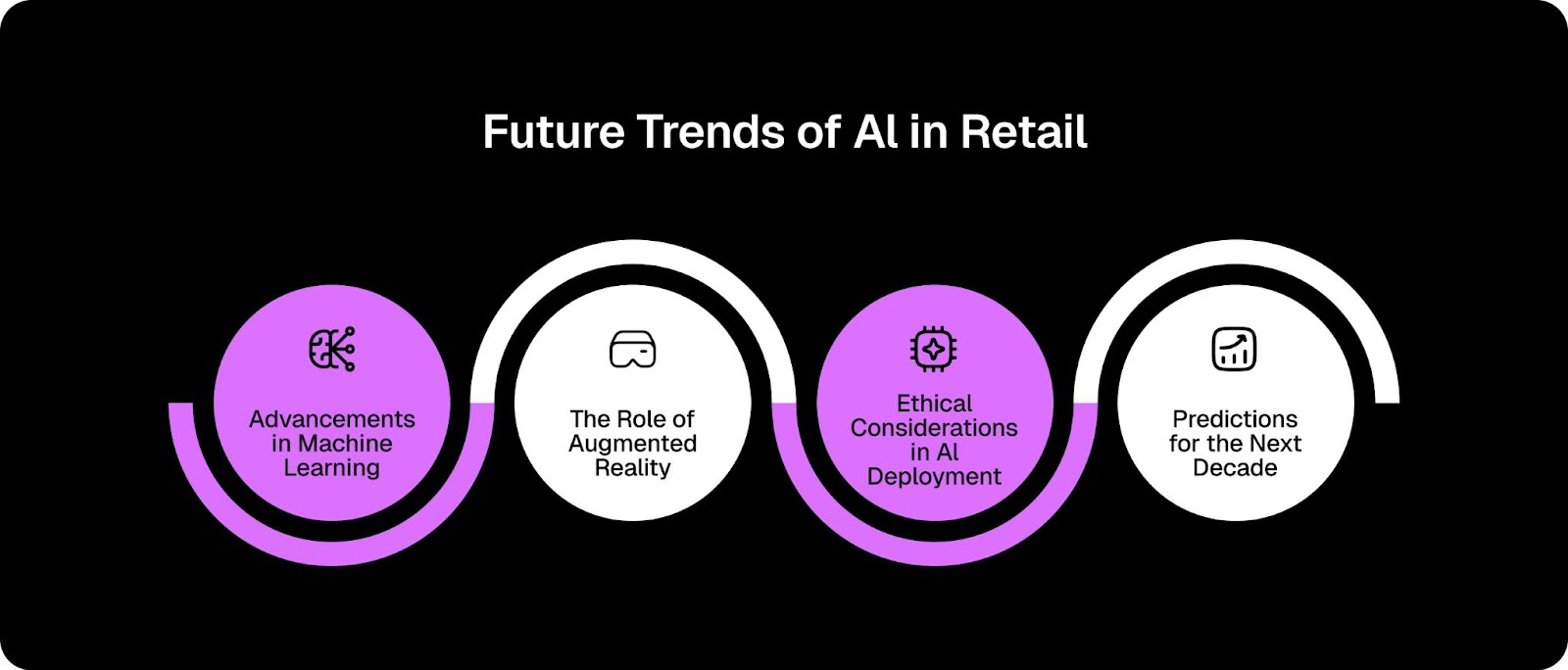
Tomorrow’s furniture retail is going to look a lot different. Here’s how AI is laying the groundwork for a smoother, more effective shopping experience.
Predicting Consumer Trends with AI to Stay Ahead
Furniture retailers need to stay ahead of customer preferences to remain competitive. AI helps by analyzing past sales data, customer behavior, and market patterns to spot emerging trends. This means retailers can anticipate demand and adjust their stock before trends peak.
For example, AI furniture retail software can help identify which products are gaining traction with certain customer segments or regions. With this insight, retailers can stock accordingly, ensuring they offer popular items at the right time and avoid overstocking products that are losing appeal.
By using AI furniture retail software to track these trends, retailers are better equipped to make decisions based on real data, not just intuition, keeping them a step ahead of the competition.
Creating a Cohesive Shopping Journey with AI-Powered Omnichannel Solutions
In furniture retail, customers expect a seamless experience whether they’re shopping online, in-store, or via mobile. AI-powered omnichannel solutions help create this seamless journey by connecting all touchpoints—allowing retailers to offer a consistent experience across platforms.
For example, if a customer browses sofas on a website, AI can ensure that the same product recommendations and offers appear in-store or in follow-up emails, providing a unified shopping experience. It also helps staff track customer preferences in real-time, so they can offer personalized assistance during in-person visits, even if the customer previously interacted online.
With AI connecting the dots, customers don’t have to repeat themselves, and retailers can ensure consistency, improving customer satisfaction and driving sales.
Future-Proofing Your Retail Business: Leveraging AI for Long-Term Success
Retail businesses are under constant pressure to keep up with changing consumer behavior and market shifts. To stay competitive in the long run, you need more than just short-term fixes. AI helps retailers not only adapt to changes but also anticipate them.
For example, AI furniture retail software can predict what products will be in demand next season, based on real-time sales data, customer preferences, and external factors like economic conditions or competitor actions. This allows retailers to adjust inventory and marketing strategies well ahead of time—without waiting for trends to catch up.
Furthermore, AI makes it easier to optimize pricing, taking into account competitor pricing, stock levels, and market conditions. This keeps you competitive without constantly monitoring and adjusting manually, which saves time and ensures you’re always offering the right products at the right price.
By now you can probably see that AI for home and furniture retail isn’t just a tool for today—it’s how furniture retailers stay ahead tomorrow. Whether it’s getting the right products in stock or turning every customer interaction into a personalized experience, AI is driving real results. The businesses that leverage it today will be the ones leading the market tomorrow.

.png)



















